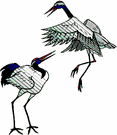Lakes north of La Junta and Rocky Ford
I had a meeting in Rocky Ford today so stayed afterwards to do a little birding in the area. Since I didn't start birding until almost 4 pm and ended at 7:30 pm, I could only check 3 of the lakes in the area.
At Lake Holbrook, just northwest of La Junta, the lake is the highest I have seen in several years (due to a lot of rain recently which has reduced usage). The only shorebirds I saw were Killdeer (which breed in large numbers around this lake). There was a flock of Black Terns flying around the lake including birds in various plumages. Two Snowy Plovers worked the low water edges where there is now a lot of tall vegetation. There were scattered American White Pelicans and ducks continuing. In the trees around the lake I saw Western Wood-Pewee, an empid (empidonax species), and a Hairy Woodpecker. The Hairy is an unusual species on the eastern plains.
I checked Lake Cheraw but found even less water then last week when I was there. After a cursory check yielded only ducks and a few distant shorebirds, I didn't search further.
Lake Meredith held 2 Great Egrets, 2 Snowy Egrets and 2 Plegadis Ibis (either White-faced or Glossy Ibis). There are still a number of Aechmorphorus grebes (either Western or Clark's Grebes), some Killdeer and a lot of white-headed gulls (those I saw clearly were Ring-necked or California). I saw 5 Baird's Sandpipers in the ditch beside the nearby Ordway stockyards.
The most productive birding today was along the county roads I drove between the lakes. At a large stock pond I found 4 Short-billed Dowitchers (confirmed by call). Near another stock pond a juvenile Prairie Falcon checking for dinner. I found 3 Loggerhead Shrikes on fences and a Say's Phoebe out in the middle of a grassland area. I saw a total of 13 hawks with 8 of them Swainson's.
SeEtta


































